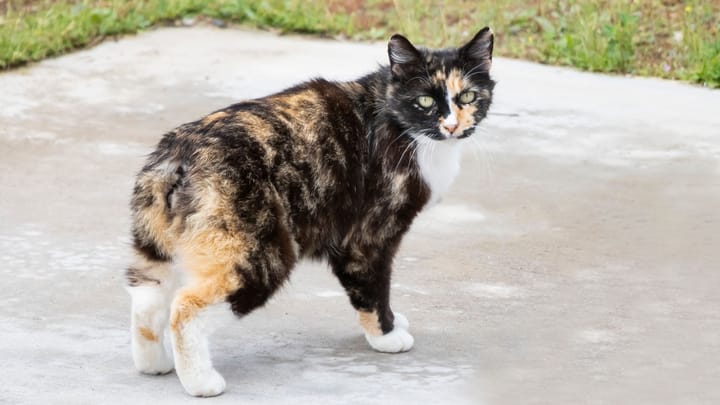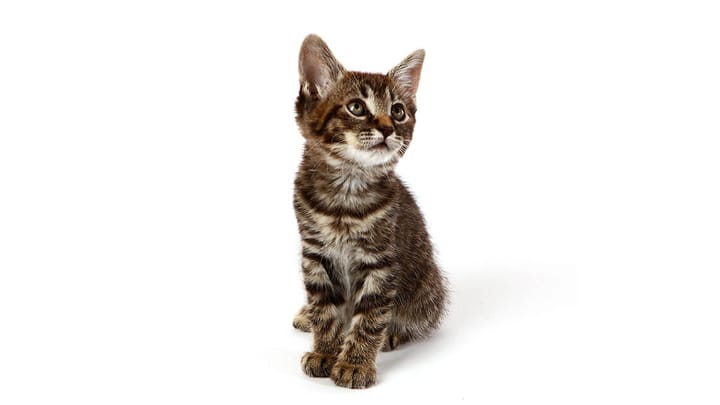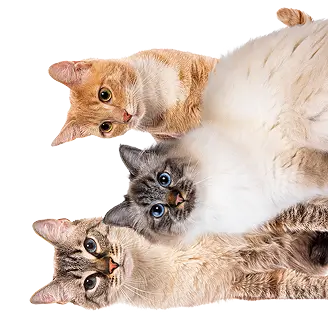Manx
Other names : Isle of Man cat, Manks, Rumpy, Stubbin


Manx are a rare and unique breed as they have no tail! Their lack of a tail results from a genetic mutation possibly caused by the high rate of feline inbreeding on the small Isle of Man, its place of origin, a few hundred years ago. The mutated gene shortens their tails to varying degrees depending on the individual. This means that while most Manx have no tail, some do still have one. Whether you consider them little miracles, or genetic outliers, Manx always get people talking about them, but we bet that’s mostly down to their adorable nature.
|
Life expectancy |
The {breedName} has a life expectancy of approximately 15 years |
|
Temperament |
|
|
Adult size |
Female
Between 12 and 14 in
Male
Between 12 and 14 in
|
|
Adult weight |
Female
Between 7 and 11 lb
Male
Between 9 and 11 lb
|
|
Coat colour
Black / seal, blue / grey-slate, chocolate, lilac / lilac, cinnamon / cinnamon, fawn / fawn, red, white, tortoiseshell |
Black Brown White Red Blue |
|
Type of coat
Short |
Short |
|
Eye colour
All colours |
Blue
Green
Yellow
Brown
|
|
Purchase price |
The Manx costs approximately 100£ |
Due to their lack of a tail, these cats require special attention when handling. Since terminal caudal nerve endings are always present, pushing, or pressing on the point where the tail should be can cause the cat pain. Similarly, you must support their hind legs when lifting a Manx to avoid tension in their spine. However, this skilful jumper will always remain balanced as their tails (or lack of) does not influence this.
More details about the Manx
Manx: Origins and history
The Isle of Man is a small island located between Ireland and England. The first cats arrived there by boat very early on in the island’s history. 200 or 300 years ago, a mutation occurred in the genome of a Manx cat. Given the isolation of the island and the dominant nature of the gene, the mutation quickly spread from generation to generation without human intervention. Manx are therefore a purely natural breed.
When breeders wanted to control the breed and its characteristics, it was mainly to preserve this unique cat, but also to limit the collateral consequences of the mutation. Despised by some, adored by others, this breed is rare in Europe today.
Physical characteristics of the Manx
Manx are totally round and have Cobby body types. Their heads are round, with round cheeks and big round, barely angled eyes. They have short backs, which curve from their shoulders to their rumps. Their strong hind legs are longer than their front legs, and their roundness is further accentuated by their lack of a tail.
This is the case at least, for the most desirable type of Manx. The different cat associations divide the breed into 4 or 5 subgroups according to the length of their tails. According to the LOOF (the French Cat Federation), the 4 subgroups are:
- The Rumpy: No caudal nor sacral vertebrae and thus the Rumpy has no tail at all! There is a small groove where a tail would normally be found.
- The Riser (or Rumpy-Riser): 1 to 3 sacral vertebrae and a small "bump" of cartilage where the tail normally is normally found.
- The Stumpy: 1 to 3 caudal vertebrae which give the Stumpy a short tail.
- The Longy: long, sometimes even totally normal tail.
Manx: Characteristics
Manx: Behaviour
Breed compatibility Manx
Manx: Purchase price
Depending on their gender, lineage, type, age, etc., it can cost approximately £100 to buy a Manx. A budget of about £25 / month is needed to provide necessary care for this cat.
Manx: Shedding
Average
Despite their thick coat and dense undercoats, they only lose a reasonably manageable amount of hair.
Manx: Grooming
Regular brushing is usually sufficient. During periods of moulting, it may be necessary to brush them a little more often to remove the dead hair.
Manx: Health
After taking a long time to mature and grow, Manx also generally live long lives, reaching fifteen years of age on average.
This "tailless cat" is generally very robust, even if you may think otherwise!
This cat has a genetic predisposition to being overweight.
- Manx Syndrome: when the mutated gene shortens the spine too much, severe abnormalities appear in the spine and spinal cord, such as spina bifida, but also in the bladder, intestines and hind legs ... Manx that suffer from this disease have significantly shortened life expectancies (5 years max).
- Megacolon: With this disease, the colon is no longer able to contract to eliminate stool, and therefore the cat loses the ability to defecate. It can be part of Manx Syndrome.
- Intertrigo: infection in the folds of the skin
- Corneal dystrophy: malformation of the eye
Manx may also develop the same illnesses found in other non pedigree cats. Also, they can be particularly prone to periodontal disease (gingivitis and tartar). Dental care is highly recommended.
The Manx gene (M), is a dominant gene, and thus expresses itself as soon as it is present. However, all tailless cats have only one mutated gene, with their other allele coding for a full length tail (m). Thus they are [Mm]. When the mutated gene is completely absent [mm], their tail is simply normal. On the other hand, an [MM] kitten will have so many changes to their spine and spinal cord that they will not survive. The gene is therefore lethal, which makes raising the breed rather difficult.
When breeding Manx cats, it is important to never to couple two completely tailless cats, because the risk of having kittens with Manx Syndrome is very high (30% risk). In general, we prefer to couple a Rumpy with a Stumpy or a Longy.






